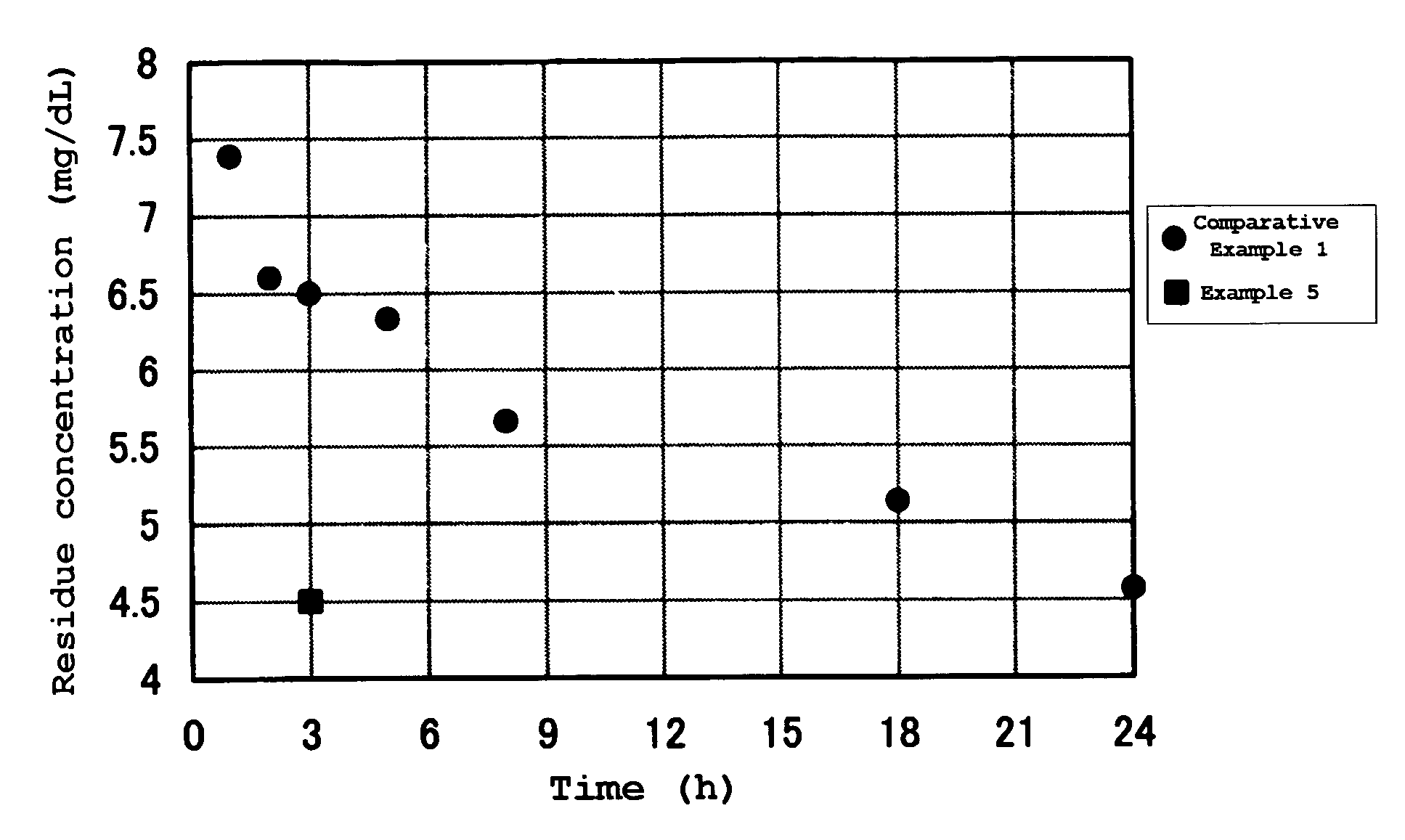Adsorbent for oral administration, and agent for treating or preventing renal or liver disease
a technology for adsorbing agents and oral administration, which is applied in the direction of antinoxious agents, extracellular fluid disorders, other chemical processes, etc., can solve the problems of defective organ replacement, serious problems, and high physical, mental and economic burdens of patients, and achieve excellent initial adsorption, treatment or preventing renal or liver disease, and high adsorption. , the effect of excellent adsorption
- Summary
- Abstract
- Description
- Claims
- Application Information
AI Technical Summary
Benefits of technology
Problems solved by technology
Method used
Image
Examples
example 1
[0079]An ion-exchange resin (styrene based; effective diameter=0.50 to 0.65 mm; trade name=Amberlite 15WET; Organo Corporation) which had been dried at 120° C. for 3 hours was sieved through a screen having an opening size of 250 μm, to remove fine powders. Then, the resulting spherical ion-exchange resin without fine powders was heated at 600° C. for 3 hours under a nitrogen gas atmosphere in a fluidized bed to obtain a spherical carbonaceous material. Then, 100 g of the resulting spherical carbonaceous material was charged into a vertical reaction quartz tube having a grating, and heated to 820° C. over 2 hours under a nitrogen gas atmosphere in a fluidized bed. Thereafter, the product was activated at 820° C. for 10 hours under an atmosphere of a nitrogen gas containing 64.5% by volume of steam to obtain 32 g of a spherical activated carbon.
[0080]The resulting spherical activated carbon was oxidized at 470° C. for 195 minutes under an atmosphere of a mixture of a nitrogen gas and...
example 2
[0082]The procedure described in Example 1 was repeated, except that the activating time was 14 hours in the activating step to obtain 17 g of a surface-modified spherical activated carbon. An average particle size was 0.35 mm.
[0083]The properties of the resulting surface-modified spherical activated carbon are listed in Tables 1 and 2.
example 3
[0084]Petroleum pitch (68 kg) (softening point=210° C., quinoline insoluble contents=not more than 1% by weight, ratio of hydrogen atoms / carbon atoms=0.63) and naphthalene (32 kg) were charged into an autoclave (internal volume=300 L) equipped with stirring fans, melted at 180° C., and mixed. Then, 68 g of acetylacetone cobalt salt was added to the pitch and dissolved by stirring. Thereafter, the mixture was cooled to 140° C. to 160° C. and extruded to form string-like shaped products. Then, the string-like shaped products were broken so that a ratio of a diameter to a length became about 1 to 2.
[0085]The resulting broken products were added to an aqueous solution prepared by dissolving 0.23% by weight of polyvinyl alcohol (saponification value=88%) and heating to 93° C., and dispersed with stirring to be spheroidized. Then, the whole was cooled by replacing the polyvinyl alcohol aqueous solution with water, at 20° C. for 3 hours, whereby the pitch was solidified and naphthalene cry...
PUM
| Property | Measurement | Unit |
|---|---|---|
| pore diameter | aaaaa | aaaaa |
| pore diameter | aaaaa | aaaaa |
| specific surface area | aaaaa | aaaaa |
Abstract
Description
Claims
Application Information
 Login to View More
Login to View More - R&D
- Intellectual Property
- Life Sciences
- Materials
- Tech Scout
- Unparalleled Data Quality
- Higher Quality Content
- 60% Fewer Hallucinations
Browse by: Latest US Patents, China's latest patents, Technical Efficacy Thesaurus, Application Domain, Technology Topic, Popular Technical Reports.
© 2025 PatSnap. All rights reserved.Legal|Privacy policy|Modern Slavery Act Transparency Statement|Sitemap|About US| Contact US: help@patsnap.com

